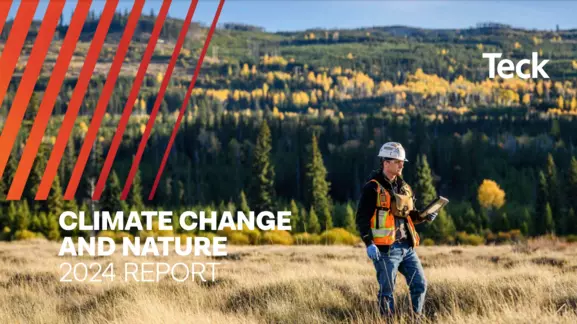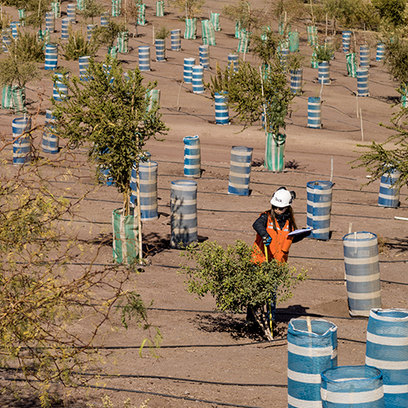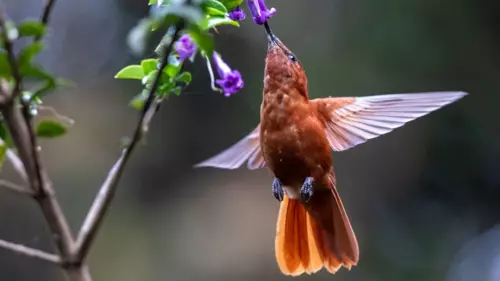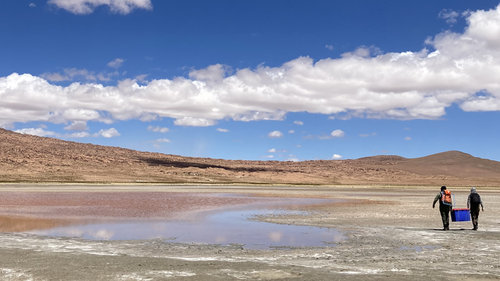When mining in a particular area of the operation is complete, we begin the work of reclaiming that area of the mine even as work continues in other areas of the operation.
Sloping and placing soil
We re-slope the area as required, and place the soil material salvaged in Step 2 on areas of the mine to be revegetated. We may also use additional coarse woody debris—fallen trees and large branches found in the areas ground cover during the reclamation process—as ground cover during the reclamation process. We also use wildlife trees, dead trees placed vertically in the ground, to provide structures on rocky areas which can be used as nesting or perching habitat for birds. This enhances the biodiversity value of the reclaimed landscape by returning key elements of mature or old growth forest that create suitable habitat for nesting birds.
Replanting
Whenever possible, we plant native species when reclaiming a mined area, chosen based on research and consultation conducted during previous planning phases. We use those native species most likely to survive and thrive in a particular area and we also plant the type of vegetation most suitable for natural ecosystems that occur in the area, in order to achieve ecosystem and biodiversity objectives. We also incorporate cultural uses of the land, after learning about those from area Indigenous peoples and other community stakeholders tied to the land.
Reclaiming water features
Another important part of the reclamation process is reclaiming water features at the mine site, such as tailings ponds and pit lakes. Tailings are the finely ground rock particles, sand, silt and other substances left following the process that extracts the valuable resource (e.g. copper, zinc, steelmaking coal) from the rock. They are often stored in tailings ponds created through the use of berms, dams or natural features that hold it all in place. Depending on the reclamation plan and the end land uses, these ponds are either entirely drained of water and decommissioned, or turned into new aquatic ecosystems of their own.
In some cases, our closure plans include creating other new water features that remain after mining, called pit lakes. In this case, when one area of a mine is complete, the remaining pit can be filled with tailings or rock and then covered with water, creating a new lake. Turning tailings ponds and pit lakes into functioning, healthy aquatic ecosystems is something Teck has done successfully at several of our sites, including our Highland Valley and Cardinal River operations.
.webp)














